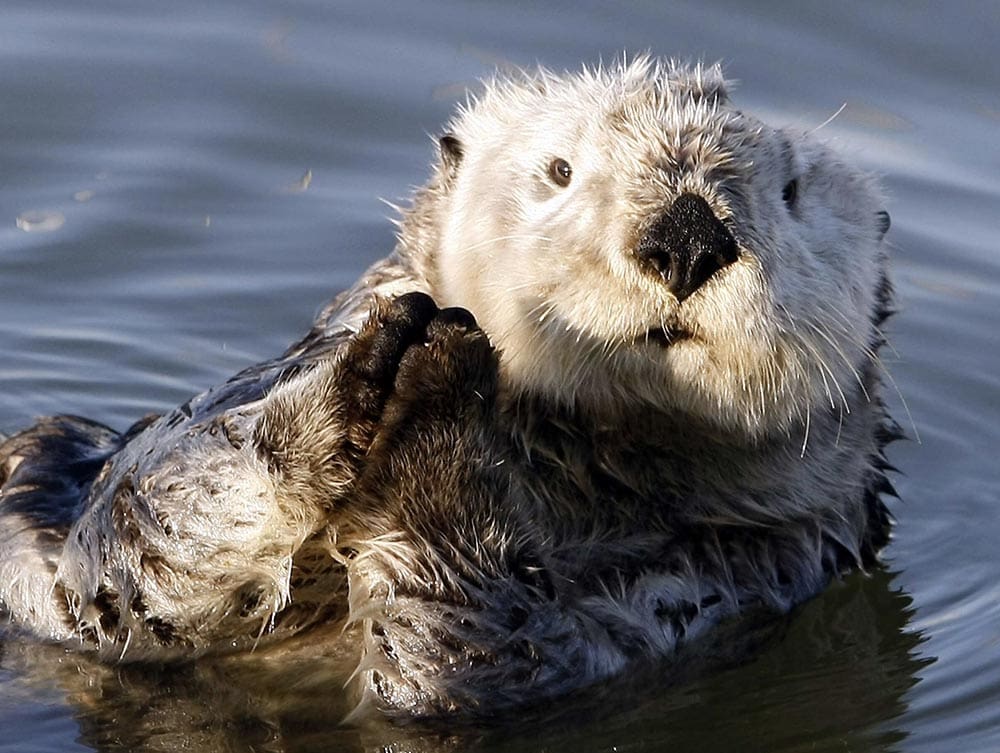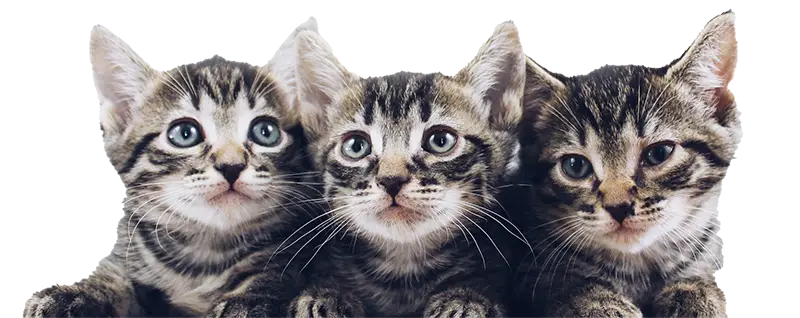


Caused by a common parasite that infects many animals, toxoplasmosis is a serious concern for the health of threatened species like the southern sea otter and the endangered Hawaiian monk seal.
When a southern sea otter was spotted rubbing his belly on a northern California beach rather than frolicking amongst the kelp, The Marine Mammal Center’s trained responders knew the animal was in distress. The otter, later identified as an adult male, was admitted to the Center’s hospital on the evening of July 3. Center volunteers aptly named him Yankee Doodle in honor of the Fourth of July holiday.
Yankee Doodle was placed in one of the Center’s newly retrofitted otter pens, separated by a pen of sea lions from our other sea otter patient, Otto, to prevent the territorial adult male otters from fighting. During an initial admit exam, Yankee Doodle exhibited signs of neurological disease in addition to being lethargic, underweight and malnourished for his age. The veterinary team ordered an MRI and some additional tests, and started Yankee Doodle on a rich diet of restaurant-quality shrimp, clam, squid and mussels.
Like Otto, Yankee Doodle’s MRI showed signs that he was suffering from domoic acid poisoning after eating shellfish contaminated with a toxin produced by harmful algal blooms. But his bloodwork indicated that he was also battling another potentially lethal condition: toxoplasmosis.
Caused by a common parasitic protozoan called Toxoplasma gondii, toxoplasmosis can cause fatal brain infections in sea otters and other animals. While the parasite can infect most birds and mammals, it can only reproduce in cats. Both domestic and wild cats, such as bobcats and cougars, shed the parasite’s oocysts, or egg-like structures, in their droppings.
These robust oocysts are able to survive for months in extreme environmental conditions. Once they reach the ocean, the oocysts can be inadvertently consumed by marine animals. For example, sticky substances secreted by seaweed may allow the oocysts to adhere to kelp, which is eaten by turban snails. Sea otters preying upon the infected turban snails may then become infected too.
Toxoplasma oocysts can also remain suspended in the water column, slowly making their way to the seafloor as marine snow. The oocysts have been shown to accumulate over time in the tissue of filter feeders like clams, mussels and scallops, which are all primary prey items for sea otters. The oocysts may also be ingested by otters during their frequent grooming sessions to keep their thick fur in good condition.
A variety of parasite infections are common in wild populations, and we often see heavy parasite loads in our patients at the Center. But toxoplasmosis is especially concerning because it is a significant cause of death in southern sea otters, which is already a threatened population.
In 2004, less than 10 years after researchers began documenting the impacts of toxoplasmosis on the sea otter population in California, the first fatal infection was observed in Hawaiian monk seals, an endangered species.
Since then, researchers have confirmed a total of eight monk seal deaths due to toxoplasmosis, though that’s a minimum number because some monk seals die undetected. For a population of just 1,300 animals, this is a major threat to the species’ survival.
In monk seals, toxoplasmosis can cause fatal damage to multiple organs, including the heart, liver and brain. Although some seals survive the infection, they can suffer from compromised immune systems or brain damage that limits their ability to handle other environmental stressors.
Like sea otters, monk seals may be exposed to the Toxoplasma oocysts directly in the water or by eating other animals that have ingested them. Although it’s possible the parasite has always existed in the marine environment, most scientists think it’s directly due to oocysts dropped by cats reaching the ocean.

